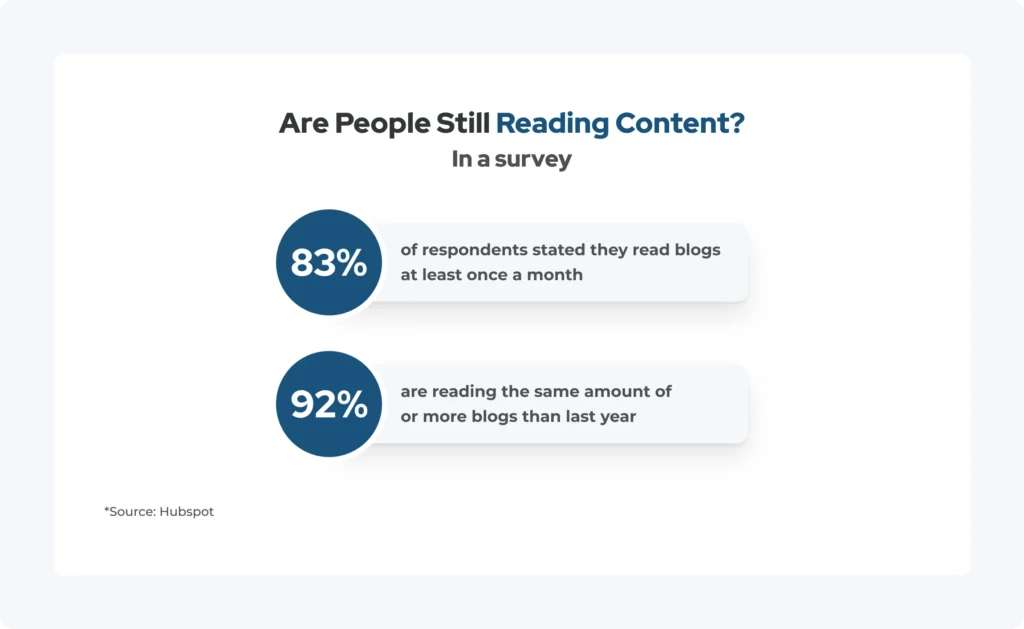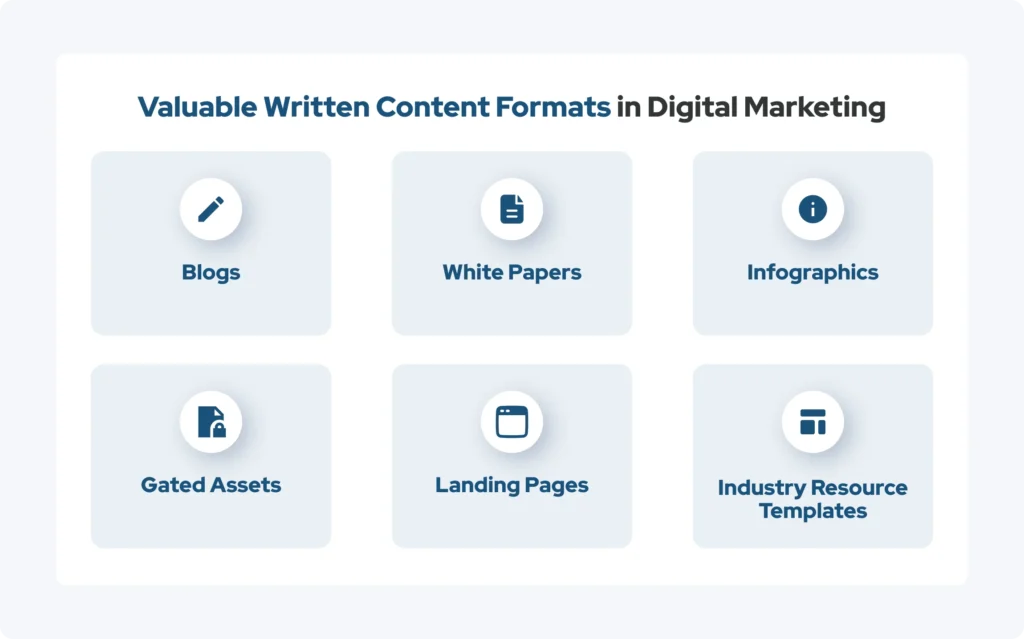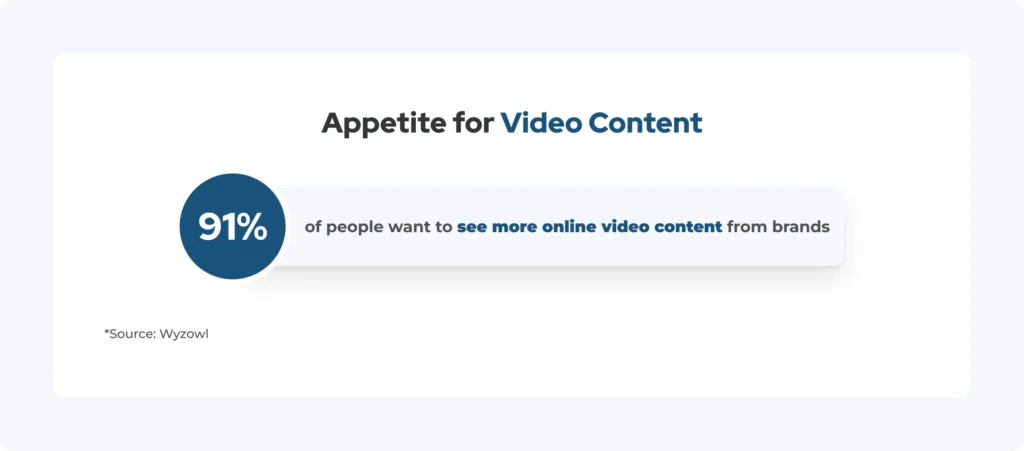Key Takeaways
- Written content is rather versatile and offers a significant amount of potential that content marketers do not always realize and take advantage of.
- Some ways you can maximize the value of your content include promoting blogs on social media, on LinkedIn, and in email marketing campaigns.
- Even after posting content, you should consider updating and refreshing it regularly so that it continues to sustain its value long-term and drive traffic.
- Maintain a clear strategy for your content by considering SEO keyword research, understanding your target audience, and identifying the question your content should answer.
Make the Most of Your Content Marketing Strategy
Have you fallen into a routine of going through the motions of creating content and posting on your site with the hopes that Google picks it up? If so, you could be missing out on some serious opportunity. Written content has long been revered for its ability to drive organic traffic to a website and support your SEO strategy, but its true potential doesn’t stop there.
Written content marketing has a wide range of value beyond just SEO-focused blog posts. It’s important to know how you can leverage this potential and get the most mileage out of each content piece and the work that you put into it.
Although the internet is rapidly changing and content creation looks vastly different than it did 10 years ago, written content still has its place. As much as 83% of consumers in one survey said that they read blogs at least once a month, and 92% of people read the same amount of or more blogs since last year. That said, with changing SERPs and the rise in AI, it’s essential that you can recognize all the ways your content can have an impact so you can maximize its benefits.

Content Marketing Tips for Increasing Its Value
Content marketing is more than just churning out as much written content as possible and throwing it on your blog page. The following content marketing tips will empower you to get the most success out of your written work.
1. Promote Your Content Across Marketing Channels
Creating content for organic traffic to your website blog is one thing, but it’s important not to miss out on the chance to really stretch the value of the content you created. Written content does not just have to sit on your blog—pushing it out through several other platforms can be impactful for driving greater results.
Especially if the topic is relevant and trending, there are plenty of ways you can market content to engage your target audience. Relevant “How-To” guides or commentary on trending topics within your industry have great potential for introducing your brand to audiences on a variety of platforms.
Ways to promote content across marketing channels include:
- Linking to your written content in organic social media posts
- Using your content as part of a greater search engine marketing campaign
- Centering your content in social media ad campaigns
Any content marketing strategy works more effectively in combination with other channels than in isolation. Consider the support of a digital marketing agency that has experience working across multiple outreach methods so you can maximize the reach of your content.
2. Diversify Your Content
It’s important not to get wrapped in a box as you create content. Different types of content can engage a wider variety of audiences and enhance the overall appeal of your strategy.
Some content types to consider include:
- Blogs
- Whitepapers
- Landing pages
- Infographics
- Industry resource templates
- Gated assets
Keep in mind that each type of content has its place, so it’s essential to consider what information you want to cover, the depth of your coverage, and which content format makes the most sense for your goals.
Blogs are great for providing more information to readers who have specific questions and are interested in additional context, whitepapers are a good idea for more advanced audiences who could benefit from more in-depth coverage of topics, and infographics are punchy and great for readers looking for quick information.
Ultimately, every approach has its own unique advantages and use cases. Being able to strategically blend each can set you apart and maximize your potential to drive traffic.

3. Repurpose Your Content for Social Media
Instead of just linking to your content on social media, you can also use and repurpose your written content to create organic social media posts that function on their own. For example, a single blog post could be broken up into multiple captions that can each be paired with creative assets for several days of posts.
You might also consider taking a few infographics from your blog post and turning them into a Facebook or Instagram post that can reel in social media followers. These options can allow you to double-dip so that your content can be used to generate even more potential value while supplementing your current social media strategy.
4. Post on LinkedIn
Yes, LinkedIn is a form of social media, but it’s worth its own special call-out, as it offers its own unique value, especially for B2B marketers. In fact, 85% of B2B content marketers say that LinkedIn is their most valuable platform.
By creating a post that links to your content, you can drive traffic to your site while also creating engagement with your LinkedIn page. You might also consider taking snippets of your content and turning them into their own stand-alone posts. Such steps help build brand awareness, drive LinkedIn engagement, and demonstrate thought leadership.
Posting on LinkedIn is most helpful for insightful content that may answer a Google question but also offers unique perspective or information on a topic. For industries like higher education, law firms, and B2B businesses, whose potential audiences may be on LinkedIn themselves, using the platform can be a great tool.
5. Supplement Your Email Marketing Campaigns
Written content pieces can be excellent supplements to your email marketing campaign efforts. “How To” content and listicle content can be great for engaging your audience in their inboxes and pulling them to your site to learn more.
Consider segmenting your audience based on their level of engagement with your business, and then send out the content that will be most relevant to them. If your target audience has already purchased from you, then they might benefit from articles that provide more information about the product and how they can make the most of their purchase.
For example, if a customer purchases a bike, an email with an article about how to perform regular maintenance or an article about local trails they can explore with their new wheels could be a great way to pique their interest and keep them engaged.
In some cases, you may prefer to create fresh new content to tie to your email. However, in others, you may be able to redirect content you have already created for your blog and infuse it into relevant emails that may capture your target audience.
6. Redirect Written Content Into Video Formats
Written content and video content can go hand-in-hand. If you’ll be doing research for written content, you might as well stretch the value you can get out of the effort you put in. Whether it’s a YouTube video or an explainer TikTok, written content can be translated into an outline or script for videos that offer their own additional performance potential.
With video formats being such a high-performing content medium, redirecting some of the effort from your written content to support video content generation could be a great way to expand your reach without reinventing the wheel.
Although written content is still incredibly valuable on its own, creating parallel video content can increase engagement and ranking potential by boosting time on page. In surveys, 91% of people said they wanted to see more online videos from brands, so having video content to supplement some of your blog posts may go a long way toward enhancing your potential output.

Be mindful not to read the blog verbatim in the video. It’s important that you vary the language a bit so that it sounds conversational and adapts to the format. However, that written piece of content can provide a firm foundation to build upon for a new outreach method.
7. Refresh Old Content
Just because your content has already been created and posted, it doesn’t mean you should forget about it and move forward, never to return again. Treat your content as living, breathing art forms by updating blogs and landing pages to ensure that they maintain longevity, respond to trends, and continue to hold value.
Information changes over time, new data comes up, and the things that your audience cares about change as well. It’s a good idea to track your content performance well beyond publishing and make adjustments based on what search terms are pulling in the most traffic.
Common aspects of content that may become outdated after posting include:
- Factual information
- Statistics
- Internal links
- External links
A good blog doesn’t just perform for a few months and fall into the ether afterwards. Refreshing your old content can keep it up-to-date and as evergreen as possible to continue to maintain consistent traffic. Consider prioritizing content that has had the largest ceiling for traffic generated in the past and still contains relevant information that your target audience could find beneficial today.
8. Strategize Your New Content
To be meaningful and also perform well, your content should have a clear strategy. If you create content without a clear vision of what you are trying to achieve, you run the risk of missing out on the full fruit of your efforts.
To ensure your content is well strategized, consider asking the following questions:
- What SEO keywords is this piece of content targeting?
- Will this content speak to my target audience?
- What information do I hope to convey with this content?
- What area of the marketing funnel will this content speak to?
- Does this content speak to current trends or topics that will grasp my target demographic?
Strategizing your content requires more than just writing. Building a cohesive and comprehensive strategy around and outside of the writing process can make all the difference in strong content performance. A digital marketing agency with multiple teams can also help you develop a cohesive strategy that allows you to create and push it out across multiple channels.
Maximize Your Content Marketing Strategy with collystring
Maximizing the mileage of your content marketing strategy requires thinking outside the box. At collystring, our expert Content writing team is well-versed in helping brands create strategic content that spans across a variety of mediums and formats while speaking to your target audience in your brand voice.
Starting with a content audit of your site, we’ll help you identify what’s driving traffic and what areas of improvement might exist. From taking a multi-channel approach to carefully strategizing each piece of content, we’ll create content that makes waves. Working in tandem with the SEO team and our other outreach channels, we’ll ensure your content is relevant, meaningful, and checks all the boxes needed to perform.
Schedule a discovery call with us today to learn more about how we can help you make the most of your content strategy.
